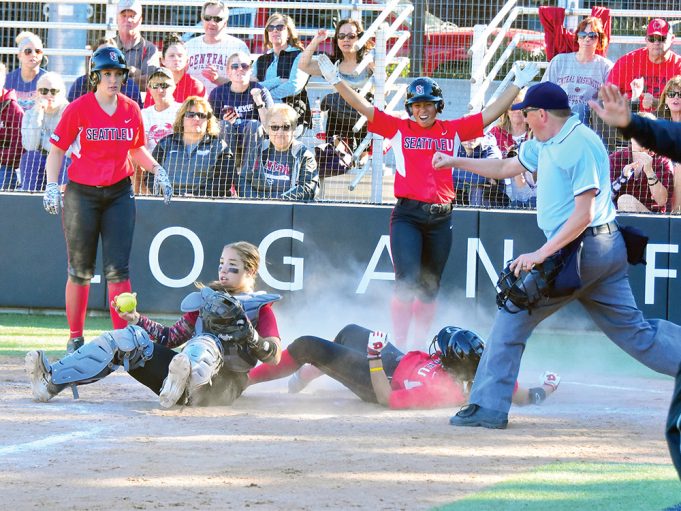Atag play at the plate is among the most exciting plays in softball. The decision the umpire renders on a close play at home determines whether the run scores. Sometimes the play even decides the game. In the attached photo, Sean Wells, Kent, Wash., makes the ruling on this play. And his “out” trumps the “safes” from the player and the coach.
- Wells correctly has his mask in his left hand while signaling. It’s a basic umpiring mechanic, yet many umpires fail to do it.
- Too often, umpires incorrectly believe they’ve got to have their noses right on the play to make a good call at the plate. Just as umpires should maintain proper distance on the bases for a force or tag play, the same philosophy holds for plays at the plate. Rarely has a call at the plate been missed because the umpire was too far away. Conversely, too many umpires are so close to the action that plays explode in front of them.
- Make sure the catcher (or whichever fielder happens to be covering the plate) has held onto the ball before making your ruling. If the ball is hidden from your view, say, “Show me the ball!” Once you’re certain it’s secure, make the out call. But if you ask to see it and it’s shown to you, you can’t call the runner safe.
- Don’t forget about the retired runner in case there’s a subsequent play at another base. Although unlikely in this situation, interference is a possibility. Additionally, a play of this nature might be a candidate for malicious contact.
- If the coach wants to dispute the ruling at the plate, she will have to wait until all playing action has ceased and time has been called.
What's Your Call? Leave a Comment:
Note: This article is archival in nature. Rules, interpretations, mechanics, philosophies and other information may or may not be correct for the current year.
This article is the copyright of ©Referee Enterprises, Inc., and may not be republished in whole or in part online, in print or in any capacity without expressed written permission from Referee. The article is made available for educational use by individuals.















